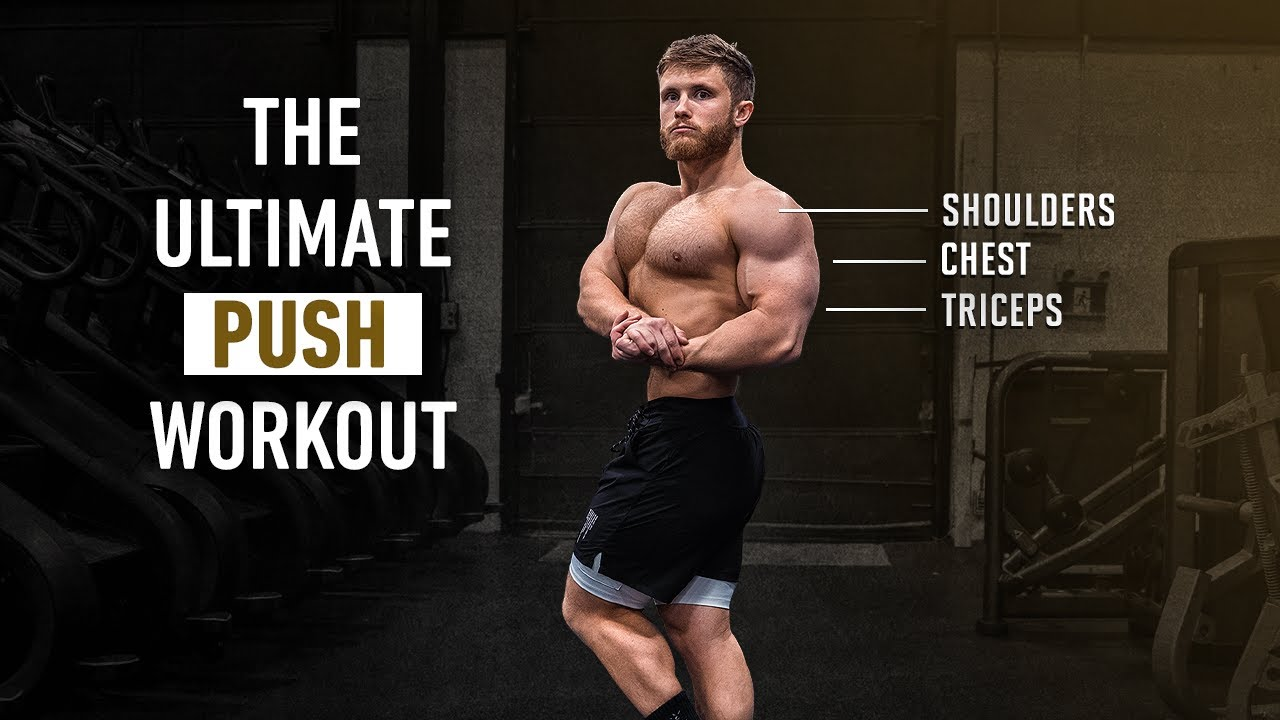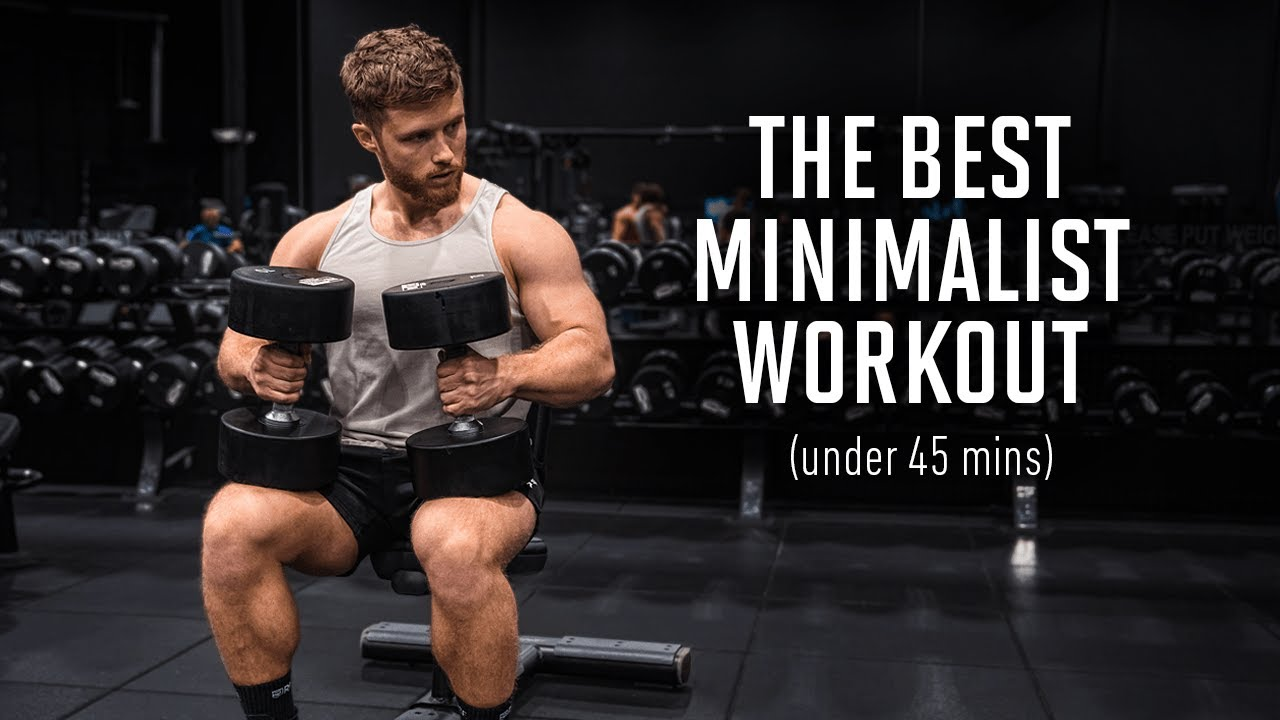Ultimate Push Day Workout: Build Massive Chest, Shoulders & Triceps
If your goal is to pack on upper body size and strength, an intelligently structured push day is essential. This push workout targets the chest, shoulders, and triceps using science-backed methods, exercise variations, and programming principles that prioritize hypertrophy and performance.
Today’s workout features a blend of compound and isolation exercises, including smart progressions, supersets, and new angles to maximize muscle activation. Here’s a breakdown of how to execute it properly, from warm-up to finisher.
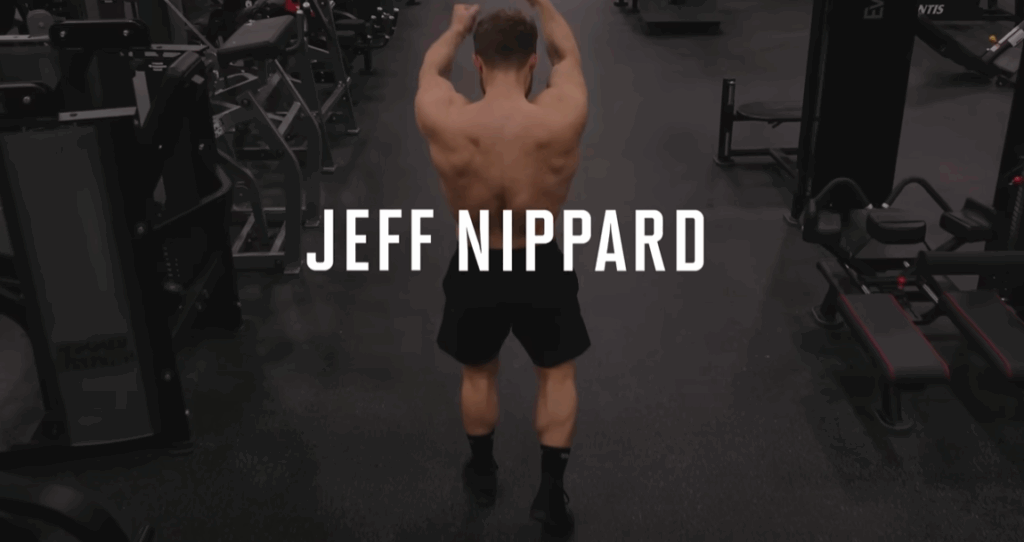
Push Day Warm-Up: Mobilize and Prime
Before jumping into heavy sets, start with five minutes of light cardio (treadmill or stair climber) to elevate core temperature. Follow that with dynamic upper-body movements like arm swings, band pull-aparts, and shoulder dislocates. If needed, include banded external rotations to engage the rotator cuff and prepare your shoulders for pressing.
Exercise 1: Heavy Barbell Bench Press (Top Set)
The first lift is a strength-focused flat bench press using low reps. You’ll be working up to one near-maximal set of 3–5 reps. Be sure to pyramid up gradually with lighter warm-up sets to prime your nervous system and mentally prepare for your top set.
Key Cues:
- Keep your upper back tight by pulling the shoulder blades together and down.
- Maintain three points of contact: head, back, and glutes on the bench.
- Lower the bar with control and drive it back up explosively.
If you train solo, lift the bar out carefully and consider using a butt-raised unrack technique for safety.
Alternative: Dumbbell press or a plate-loaded machine press if barbell benching isn’t ideal for your joints.
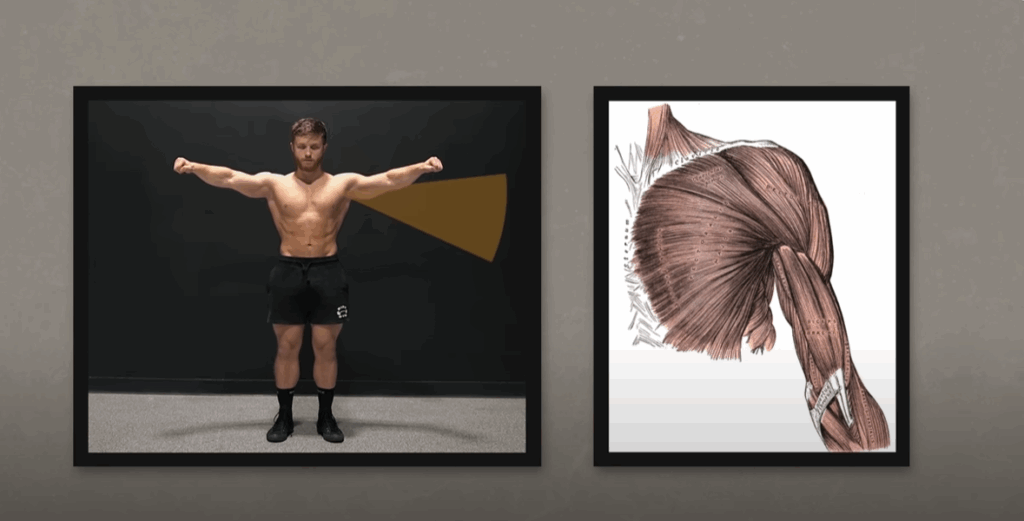
Exercise 2: Larson Press – 2 Sets of 10 Reps
For the second chest movement, drop the weight to about 75% of your top bench set and switch to the Larson press. This variation removes leg drive by having your feet up, shifting more demand to your pecs, shoulders, and triceps.
Use a moderate grip—slightly closer than traditional bench press—to extend the range of motion and create more pec tension. Perform each rep under control, with a 1–2 second descent and a powerful but smooth lift.
Exercise 3: Standing Dumbbell Arnold Press – 3 Sets of 8–10 Reps
Now shift your focus to vertical pressing. The Arnold press is a dynamic movement that trains all three deltoid heads with a unique rotational pattern.
Start with the dumbbells in front of your shoulders, palms facing in. As you press up, rotate the dumbbells until your palms face forward at the top. Reverse the motion slowly back to the start.
Pro Tip: Brace your core and squeeze your glutes to prevent leaning back. As you progress, aim to increase weight while maintaining good control.
Exercise 4: One-Arm Cable Press-Around Superset With Static Pec Stretch
This superset combines contraction and stretch-based training for the pecs.
Cable Press-Around (2 x 12–15):
Using a single cable, press across your body past the midline. This hits the often-neglected end-range contraction of the pecs, which most traditional presses and flies miss.
Static Pec Stretch (30 sec):
Right after each set, hold a deep chest stretch by extending your arm back with the cable, targeting the fully lengthened position of the pec.
This technique is backed by emerging research suggesting that stretch-based training may boost hypertrophy when performed between sets.
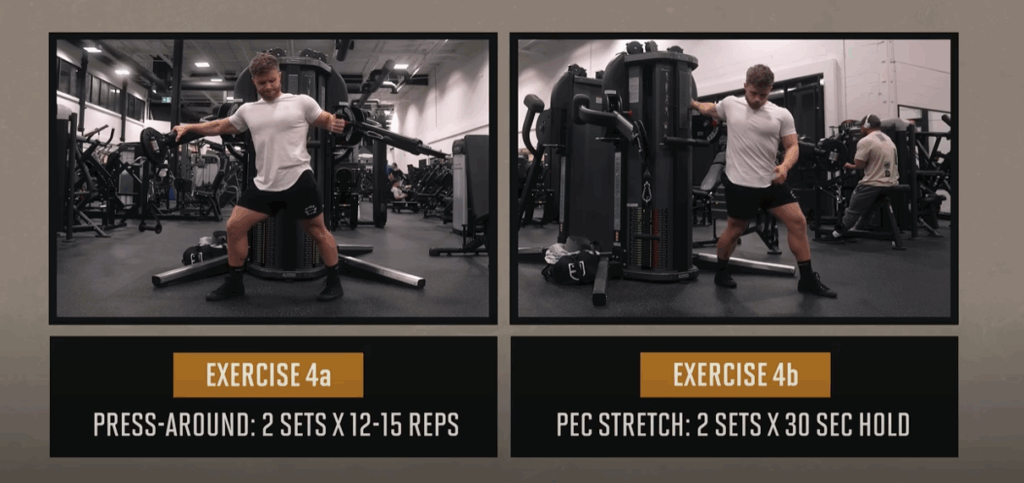
Exercise 5: Crossbody Cable Y-Raise – 3 Sets of 12–15 Reps
Unlike standard lateral raises, this move allows for a greater stretch and a more complete contraction of the medial deltoid.
Set the pulley low and draw the cable across your body in a Y-shaped path. Avoid turning the motion into a front raise—keep the movement angled diagonally up and slightly back.
This movement may better engage the lesser-known segments of the delts, especially those in between the front and lateral heads, contributing to a fuller shoulder appearance.
Exercise 6: Triceps Overload Superset – 3 Sets
This superset isolates the triceps from two angles using partial reps.
Squeeze-Only Pressdowns (8 reps):
Perform just the contraction phase (bottom half) of a rope or straight-bar pressdown. Focus on squeezing and locking out the triceps.
Stretch-Only Overhead Extensions (8 reps):
Immediately switch to overhead triceps extensions but only perform the bottom half of the movement. This emphasizes the long head of the triceps in the stretched position.
This pairing creates intense mechanical tension across the entire muscle while minimizing fatigue from full-range reps.
Exercise 7: Crossbody Triceps Extension – 2 Sets of 10–12 Reps
Finish your session with a unique triceps angle that targets the long head differently. Perform crossbody extensions using a single high cable with your arm raised outward, not tucked.
This angle places tension on the triceps in a position rarely trained and may provide a new growth stimulus, especially if your arms have hit a plateau.
Programming Tips
- Progressive overload is key. Log your lifts and aim to add small increments each week.
- Rest periods: 60–90 seconds between isolation sets, 2–3 minutes for heavy compounds.
- Frequency: Include this workout once or twice per week as part of a push-pull-legs split.
Final Thoughts: Training Smart for Long-Term Growth
A great push workout isn’t just about throwing weights around. It’s about understanding the roles of each muscle group, the angles that target them best, and implementing a blend of mechanical tension, metabolic stress, and muscle lengthening.
This workout balances all three for maximum muscle growth. Whether you’re a physique athlete or a serious gym-goer, adding structure like this to your training can make all the difference.
Ready to unlock the next level of your physique? Integrate this push workout into your routine and keep an eye out for the accompanying pull and leg days to complete the full hypertrophy system.


